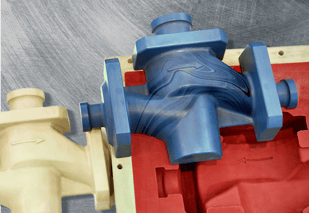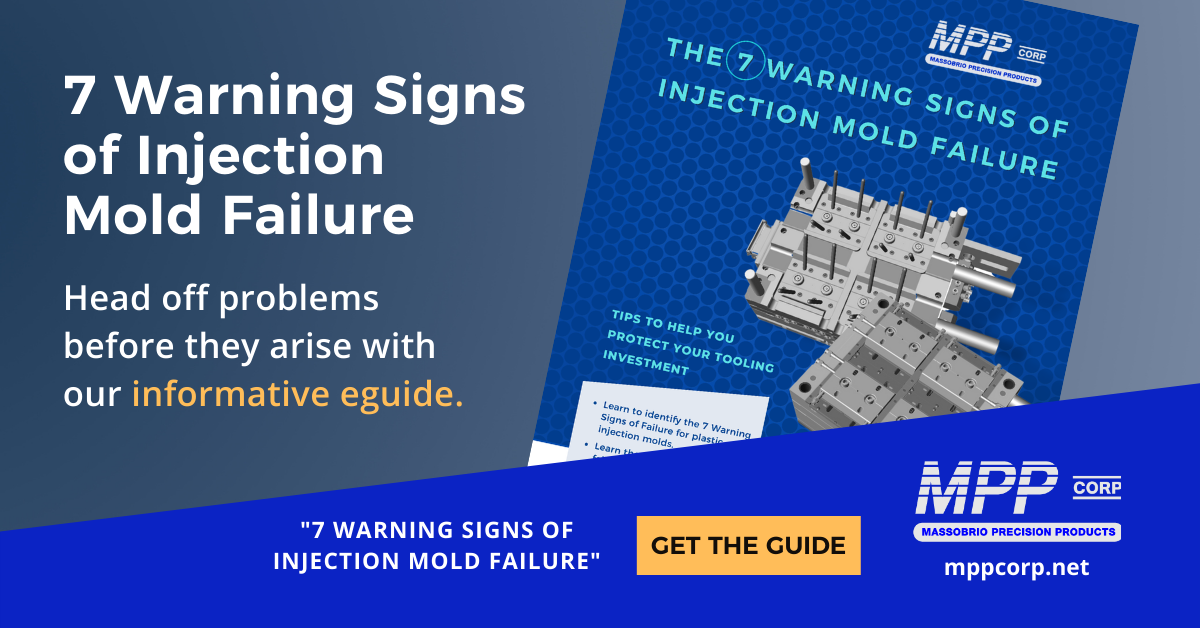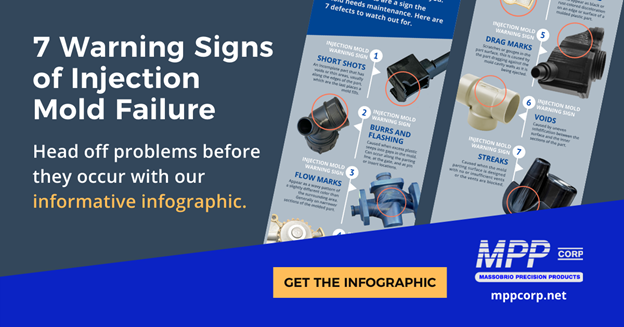You spend a lot of money on your plastic injection molds. Maintaining and repairing them can keep them running for years, providing a valuable return on your investment.
Short of a mold totally crashing, how do you know when a mold needs repair or maintenance? This article will tell you. We identify a plastic part defect that can be sign of mold repair and maintenance. This article is part of a series discussing injection mold maintenance and repair.
Signs That Your Injection Mold Needs Repair or Maintenance
How do you know when a mold needs maintenance or repair? Short of a complete failure, here are the 7 tell-tale signs to look for in the parts that are produced by the mold.
- #1: Short shots where parts are ejected in an incomplete state
- #2: Burrs and flashing caused when excess plastic seeps into gaps in the mold
- #3: Flow marks caused by uneven injection speed or cooling
- #4: Blistering, stress cracks, and burn marks brought on by prolonged exposure to high temperatures
- #5: Drag marks caused by a misaligned ejector system
- #6: Voids or depressions from non-uniform heating or cooling of materials
- #7: Streaks
I this article, we discuss warning sign #3, Flow Marks.
Injection Mold Warning Sign #3: Flow Marks
 Flow lines appear as a wavy pattern of a slightly different color than the surrounding area and generally on narrower sections of the molded component. They may also appear as ring-shaped bands on a product’s surface near the entry points of the mold, or “gates”, which the molten material flows through.
Flow lines appear as a wavy pattern of a slightly different color than the surrounding area and generally on narrower sections of the molded component. They may also appear as ring-shaped bands on a product’s surface near the entry points of the mold, or “gates”, which the molten material flows through.
Flow lines are most often the result of variations in the cooling speed of the material as it flows in different directions throughout the mold. Flow lines happen when material is injected too slowly and cools too quickly. Differences in wall thickness can also cause the material to cool at different rates, leaving behind flow lines.
Here are common remedies for flow lines in injection-molded products:
- Increase the injection speed, pressure and material temperature to ensure the material fills the mold before cooling
- Round the corners of the mold where wall thickness increases to help keep flow rate consistent and prevent flow lines
- Relocate mold gates to create more distance between them and the mold coolant to help prevent the material from cooling too early during flow
- Increase the nozzle diameter to raise flow speed and prevent early cooling
Choose an Injection Mold Maintenance and Repair Partner You Can Trust
Why choose MPP? When you choose MPP, you get:
- A team of mold builders who have a combined 100+ years of mold building experience
- Expert knowledge of plastics and manufacturing processes
- In-house engineering and design services from experienced engineers
- In-house repair and maintenance from skilled mold builders, welders and machine operators
- A Quality Assurance system that meets all requirements of the ISO 9001:2008 Quality Assurance Standard
- Pickup and delivery from anywhere, anytime
- Personalized solutions
To discover how we can help you, call 810.364.2939 or contact us.



